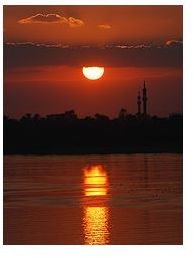Learn About the Nile River: The Longest River in the World
There has been somewhat of a rivalry between the two longest rivers in the world, the Amazon and the Nile. Recent research has made a case that the longest river in the world is the Amazon, however, many scientist are still skeptical of this claim. With only a few miles separating the winning river, the Nile is still considered the winner.
Geographical Features
The Nile Rive is located in Africa. It is 4,135 miles in length, less than a hundred miles longer than its closest competitor the Amazon River. This long river flows north to the Mediterranean Sea from central Africa. There are two main sources for the water of the Nile River. The first is the White Nile which begins in Lake Victoria in Uganda. The second is the Blue Nile which begins in Ethiopia’s Lake Tana.
History
Have you ever wondered why a mountain or a river has a particular name? Often the names given to locations are based on what the item looks like or where it is located. The ancient Egyptians called the Nile River the Ar or the Aur, which means black. This was an appropriate name because the river left behind a dark black sediment after it flooded the banks. The present name was derived from the Greek. When the Greek encountered the Nile they named it Neilos, which simply means river valley. As you can see, both cultures named the river for its characteristics.
Importance
The importance of the Nile River cannot be overstated. This is the main water source for this area of Africa and along it one of the greatest civilizations of ancient times, Egypt, thrived. Without the seasonal flooding of the Nile River, the crops that allowed the culture to thrive and grow would not have been possible. The Nile River was also used extensively for travel in the days before car, train, or airplane. The ability to travel great distances facilitated trade between the peoples who lived near the river and allowed for the various establishments to specialize in goods they could trade for other items. In addition to the farmland and trading opportunities, animals were also drawn to the water source. This made hunting easier, providing the cultures even more food and allowing for further growth.
In modern times, the waterway is still heavily used for transportation and for potable water. The population density is dramatically higher in close proximity to the Nile River than in other nearby regions because of the necessity of fresh water.
References
- Photo Credit: Michael Gwyther-Jones
- National Geographic
